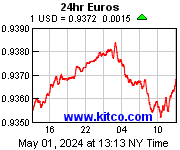Mechanism Design Theory
In economics, mechanism design is the art of designing rules of a game to achieve a specific outcome. This is done by setting up a structure in which each player has an incentive to behave as the designer intends. The game is then said to implement the desired outcome. The strength of such a result depends on the solution concept used in the game.
Mechanism designers commonly try to achieve the following basic outcomes: truthfulness, individual rationality, budget balance, and social welfare. More advanced mechanisms attempt to resist harmful coalitions of players.
Most of the results in mechanism design have been established by economists, but some mathematicians, computer scientists, and electrical engineers also work in the field.
One branch of mechanism design is the creation of markets, auctions, and combinatorial auctions. Another is the design of matching algorithms, such as the one used to pair medical school graduates with internships. A third application is to the provision of public goods and to the optimal design of taxation schemes by governments.
A common exercise in mechanism design is to achieve the desired outcome according to a specific solution concept. The celebrated Gibbard-Satterthwaite theorem shows that any outcome that can be implemented as a dominant strategy equilibrium is necessarily dictatorial. This is similar to Arrow's Impossibility Theorem. By contrast, implementation in Nash equilibrium is possible for a much wider range of social choice rules.
The 2007 Nobel Prize in Economics was awarded to Leonid Hurwicz, Eric Maskin, and Roger Myerson "for having laid the foundations of mechanism design theory".
****** Above extracted from Wikipedia
A certain class of principal-agent problems are called mechanism design problems. In these, a principal would like to condition her own actions on the private information of agents. The principal must offer incentives for the agents to reveal information.
Examples from the theoretical literature are auction design, monopolistic price discrimination, and optimal taxation. In an auction the seller would like to set a price just below the highest valuation of a potential buyer, but does not know that price, and an auction is a mechanism to at least partially reveal it. In a price discrimination, the seller would like to offer the product at different prices to groups with different valuations but may not be able to identify which group an agent is a member of in advance.
Terms related to Mechanism Design Problems:
Principal-Agent Problem,.....Auction,.....Price Discrimination.
Definition: Principal-agent problem is a particular game-theoretic description of a situation. There is a player called a principal (e.g. fund purchaser), and one or more other players called agents (e.g. fund managers) with utility functions that are in some sense different from the principal's. The principal can act more effectively through the agents than directly, and must construct incentive schemes to get them to behave at least partly according to the principal's interests. The principal-agent problem is that of designing the incentive scheme.
Definition: An auction is the process of buying and selling goods by offering them up for bid, taking bids, and then selling the item to the winning bidder. In economic theory, an auction is a method for determining the value of a commodity that has an undetermined or variable price.
Definition: Price Discrimination is the practice of charging different prices for the same product of the same cost in different market segments. It also refers to market segmentation.
Listen to program :
http://www.publicradio.org/tools/media/player/news/midday/2007/10/15_midday1.ram
The Prize in Economic Sciences in Memory of Alfred Nobel 2007 :
http://nobelprize.org/nobel_prizes/economics/laureates/2007/index.html
Also in Chinese at http://wongtc.blogspot.com/2007/10/3.html














